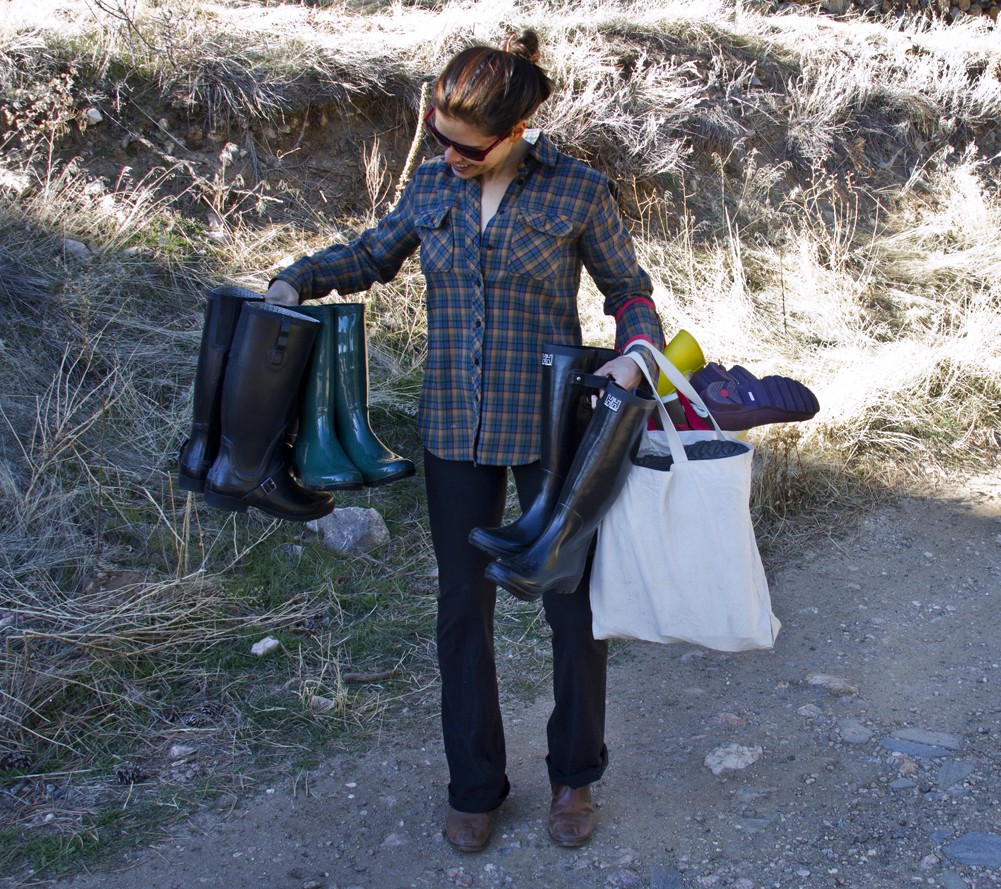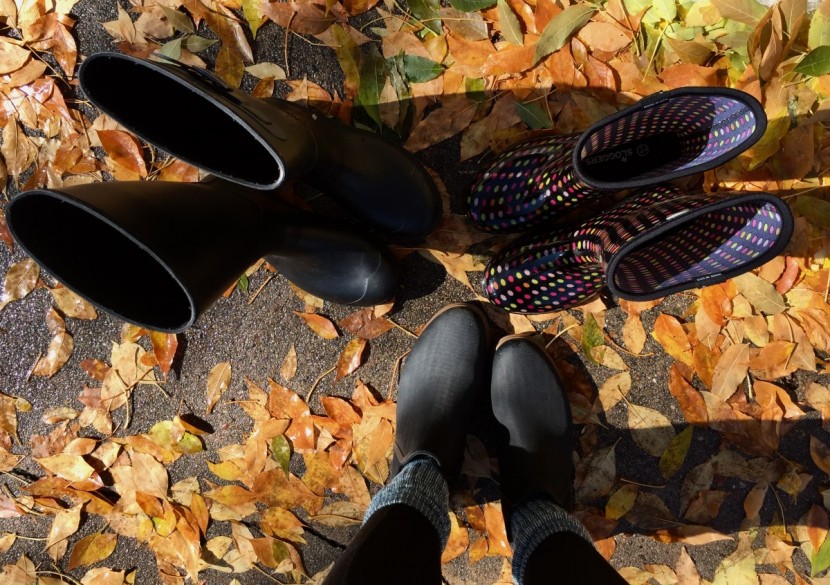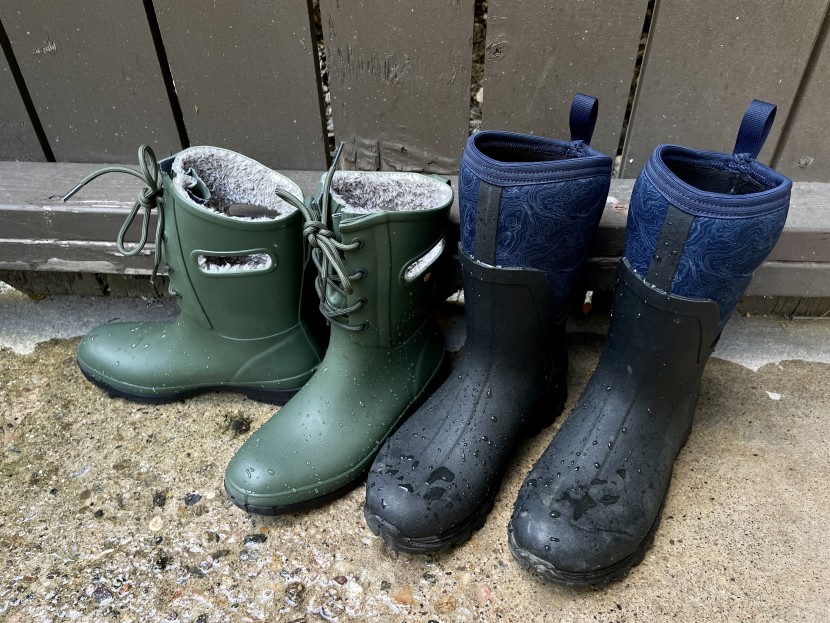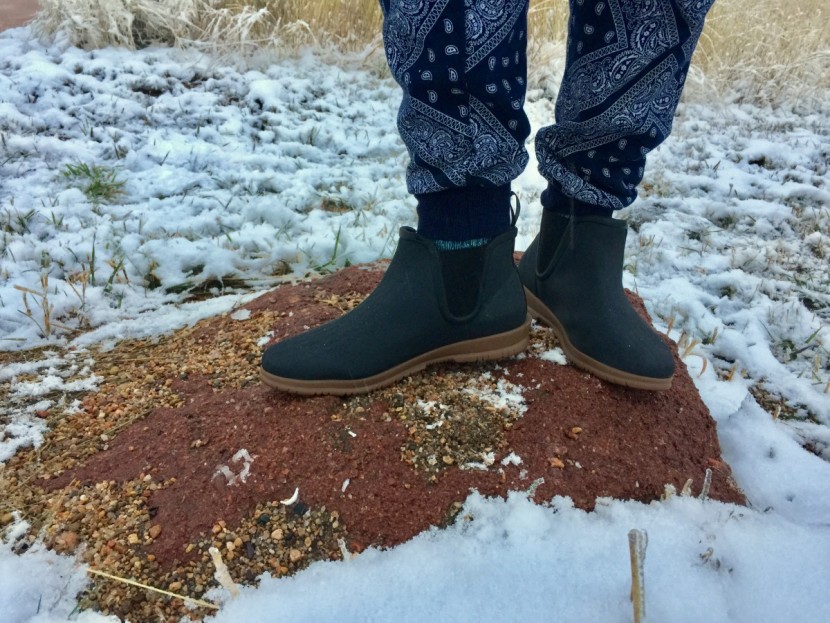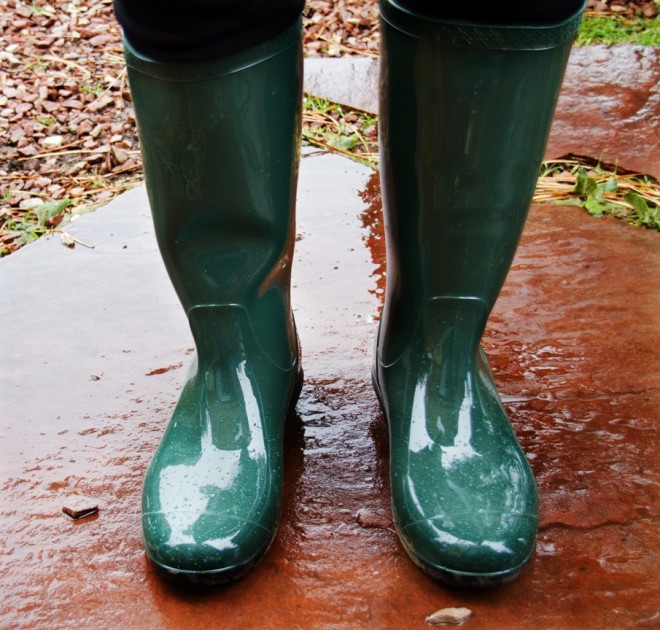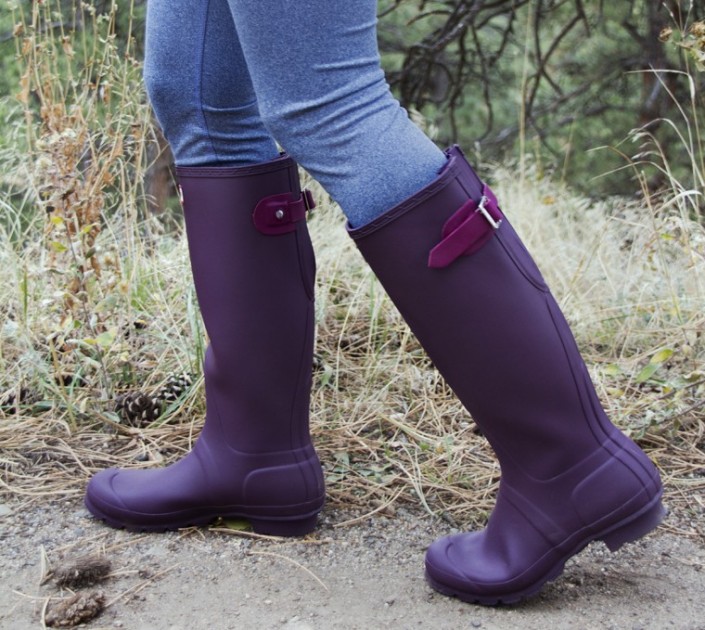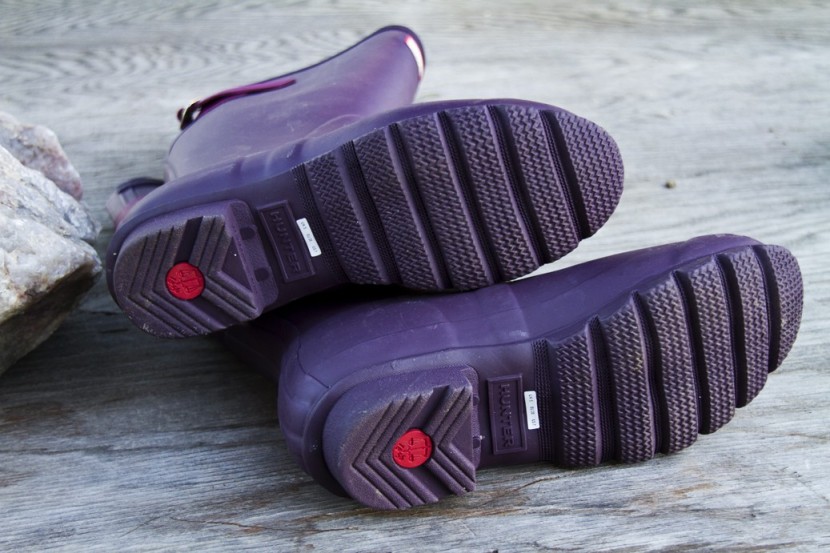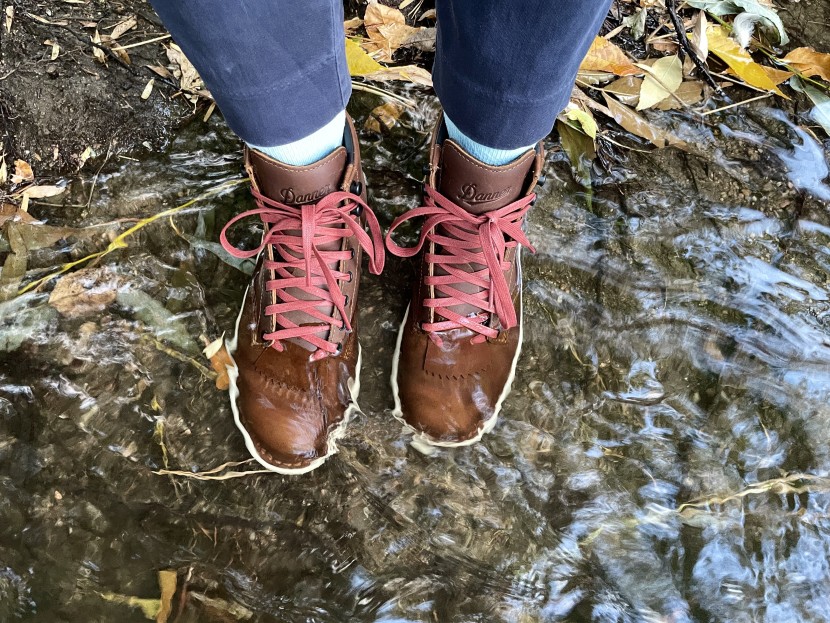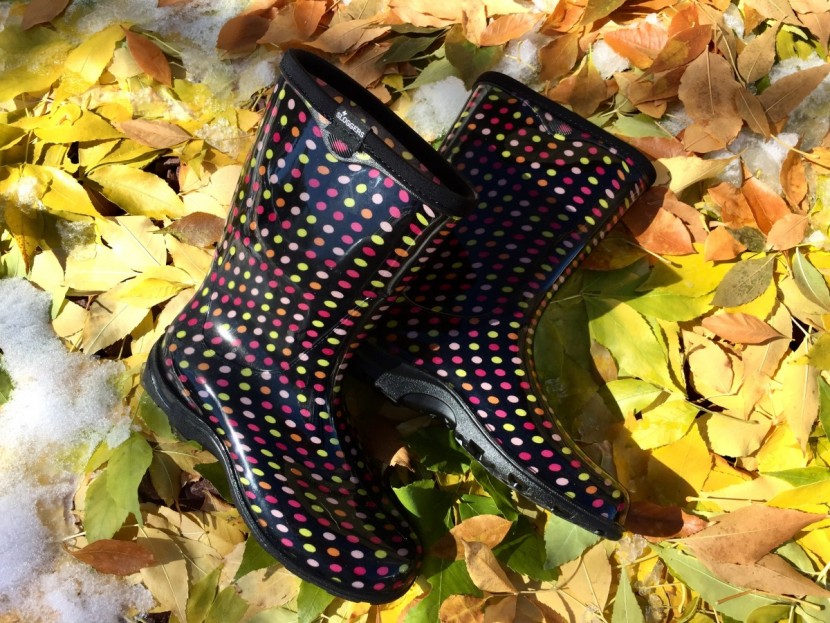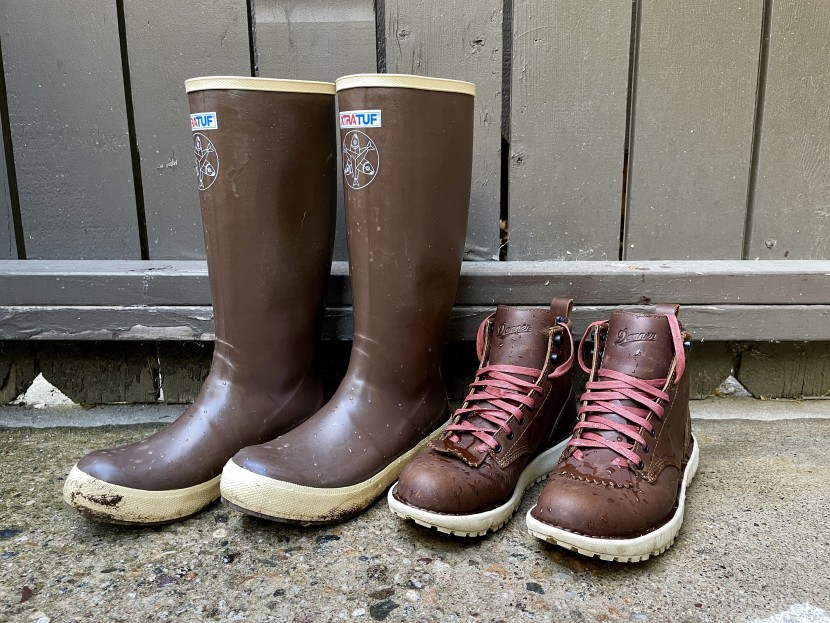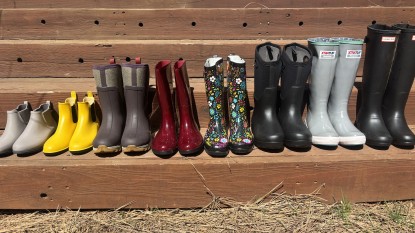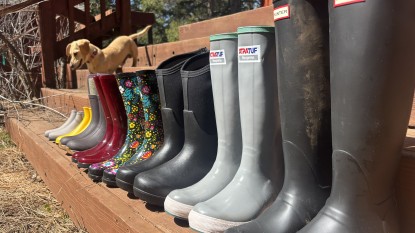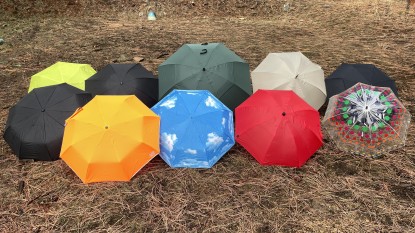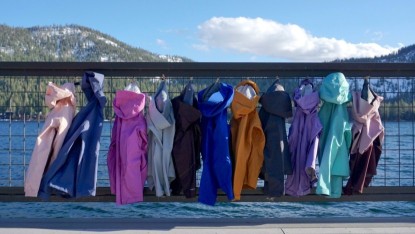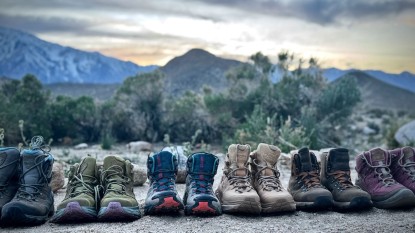Rain boots have become a necessary item for the wardrobe, especially for those living in seasonal environments and along temperate coasts. With style often contending with comfort and traction, it can be rather difficult to settle on what's best. After having tested all kinds of rain boots side-by-side, we gather our expertise in this article to help you better understand the fundamentals that make a pair of boots worthwhile. A good place to start is to differentiate rain-specific boots from alternative waterproof footwear and how each function in their own realms.
What Kind of Boot Do You Really Need?
First and foremost, you will want to determine precisely what kind of sloppy weather footwear best fits your needs for the environment you will be walking, working, or hiking in. To help you figure that out, we'll discuss what makes up certain types of footwear.
Rain Boots
Traditional rain boots are typically a very distinguishable category due to their sleek look, rubber or neoprene shafts, minimal outsoles, and their often bright or patterned colors. Specific to rain, these types of boots are not manufactured to compete with boots made for heavy snow or for substantial hiking. Additionally, their rather simple and straightforward construction rarely encompass all the preferred comforts of daily footwear.
In their most basic forms, they are made to keep your feet dry in wet conditions and often include features for you to slide the boot on and off easily, such as pull tabs and heel nubs. Boot materials can range from treated neoprene to the standard vulcanized rubber. Vulcanized means that the rubber has been treated to improve strength and elasticity.
Furthermore, rain boots are usually made from a synthetic rubber, as opposed to a natural rubber, and have simple, thin nylon or cotton internal lining, or no lining whatsoever. The fancier the design, the more perks or accessories are thrown in, such as buckles or laces. Sometimes you come across hybrids, where significant insulation has been added for colder weather. The majority of the boots we've tested are of the more traditional, mild-weather approach, ideal for temperatures between 40 and 70 degrees Fahrenheit, with basic shafts and little to no insulation.
Winter Boots
Boots made for trudging in the snow encompass a wide range of activities, from the at-home shoveling duty to a trip into the backcountry. Many winter boots do carry over into the waterproof hiking category, except they have far more technical insulation. Generally rated down to below-freezing temperatures, the insulation is the most distinguishing feature of winter boots, with traction being of high priority as well. Classic winter boots are often laced and made of either waterproofed nylon, Gore-tex (the two most breathable options), leather, or a combination of leather and nylon (leather being the least breathable option). They can also vary in height from the ankles to the knees. Basically, this type of footwear is made for prolonged exposure to the freezing elements, which is something that rainwear generally is not.
Waterproof Hiking Boots
In the name of being fully waterproof, these types of boots will not be as breathable as their non-waterproof hiking kin. They are traditionally laced and made with either nylon, a waterproof liner, or leather, and they don't have extra insulation. Too, they are typically no taller than the ankles. Traction and long-term comfort are of priority here. Designed to go the miles, durability and off-road mobility are actually far more important than their waterproofing, in our opinion. Nonetheless, when it comes to long-distance hiking through rainy conditions, such as being caught in a summer thunderstorm, waterproof hiking boots can be lifesavers and keepers of foot sanity. They are ideal for spring, summer, and fall romps through the mountains when the weather is unpredictable yet mild, when slush and mud don the trails, or when snowmelt yields swollen stream crossings. Again, the key to this category is the designed use for rugged and unpredictable terrain in which your level of activity doesn't also warrant added insulation (i.e., constant walking vs standing still for long periods of time).
Purchasing Considerations
If you indeed feel that a rain boot is what you need, there are some things to keep in mind as you narrow in on your final decision.
Different Types of Rain Boots
Coming in all sorts of shapes and sizes, rain boots can most easily be categorized by shaft height: ankle-height, mid-calf, or tall. Ankle-height boots peak around the ankles or slightly above the ankles with a height, as measured from the floor, that is usually less than 9 inches. The height of mid-calf boots can typically measure 10-14 inches from the ground; and lastly, tall boots can be anywhere from 14 to over 16 inches in height (or even more in extreme cases).
Warmth & Weather Protection
Intuitively, the shorter the shaft height of your boot, the less overall weather protection you get (particularly from overspray), but it depends on what your particular needs are. On the other hand, tall boots are often more difficult to wear with pants, which tends to make mid-calf or ankle-height boots more appealing and versatile for the wardrobe.
It's important to keep in mind the type of environment you live in and the activities you foresee yourself needing rainwear for. For humid locations or temperate coastlines, rain is likely all the inclement weather you'll encounter. For these locales, it's best to shop for boots that have little to no insulation, which will provide more room for thicker socks if the temperatures occasionally require such. Without the added insulation, your feet are less likely to overheat and sweat. You wouldn't want to end up with swampy feet throughout the day, negating the very reason for wearing the boots in the first place. In and of themselves, rubber boots do not breathe well, if at all, so being fully waterproof is already an adequate standard of warmth for the rain.
As stated previously, the majority of the boots we have tested do not have added insulation. They are either thinly lined with nylon or cotton or have no liner at all. During testing, these minimally lined boots scored rather average in warmth, which is only a measure of how well they keep heat under various circumstances. A consistently hot environment means you want a boot with a low warmth score.
Too, it's best to think about the rainy season where you live. If rain also means very chilly or frigid temps where you live, then perhaps you should consider a more insulated pair or, at the very least, make sure the boot you get is lined. We do recognize that insulated boots usually cost a lot more, so, worst-case-scenario, wearing high quality, thick socks in an unlined or minimalist boot should do the trick (and making sure the boot size you choose can accommodate thick socks).
When taking the year-round climate into consideration, it's good to familiarize yourself with the average precipitation your region receives. If you live in a four-season mountain community, it might still be advantageous to purchase a mild-weather boot for summer thunderstorms and spring and fall slush — as winter will likely be taken care of via appropriate winter boots. If it pours as opposed to the occasional misting, and you are likely to encounter huge puddles, a taller shaft should be of priority for you. On the other hand, if the rare drizzle is all you're concerned with, then ankle-height options tend to be more convenient and casual.
Too, there are purposes for rubber boots to be solely utilized for work in the outdoors, rain or shine, such as on a commercial fishing rig, on a farm, or if your hobbies include gardening and combing the shoreline for shells. Easy to clean by simply wiping them down, rubber is a convenient material in such instances. No matter the weather forecast, brainstorm your routines and the circumstances in which you'd get the most out of your boots.
Comfort
The hope, and a standard we expect, is for a boot to provide adequate foot support and comfort throughout the day. This is especially critical for work environments where waterproof boots are an invaluable asset, such as the examples mentioned above: from fishing to the farm to the garden. All-day wear and proper fit are important, although tricky (we discuss fit in another section below). The XTRATUF Legacy is an excellent choice for those who work outdoors, and the design stands out for its thick sole and incredible flexibility in the shaft. These marine-inspired boots are made for you to work hard in. If this is the type of performance you're looking for, comfort should always be of high priority.
To help predict comfort, it's beneficial to consider how stiff the upper rubber of your potential boot is and also how flexible the sole is. Reading individual product reviews should give you insight into a model's specific stiffness and overall comfort, but trying them on, is, of course, best. You want sufficient support in the soles for substantial walking, and you need the boot to be flexible enough to move with your legs as fluidly as possible. If you find or feel significant resistance, blisters and aches can develop over time. A good rule of thumb is that if the boots don't feel comfortable immediately, the nature of rubber or other waterproof materials won't necessarily soften or “break in” over time.
You also don't want your boots to be too big or too wide, even with thick socks. This will allow for prominent heel slippage (meaning, your heel lifts inside the boot as the boot itself does not lift with your heel), creating more opportunity for blisters and ineffective foot support. On the other hand, boots that are too small and narrow can leave your feet feeling cramped, again causing hot spots to develop with unwanted pressure on the feet. Stick to your gut when it comes to sizing, as you know your feet best.
In addition to physically wearing and using the boots, comfort also blends with warmth and weather protection, since keeping your feet cozy and dry are very much a part of how we perceive comfort for ourselves. Don't forget to keep this bigger picture in mind when trying on a pair or while perusing customer comments.
Traction
Traction through wet environments is critical for rain boots in our opinion. Staying upright while walking through a rainstorm, we can surely agree, is a worthwhile goal. Looking at the bottom (the outsole) of a boot is useful here. Envision a car tire with all its grooves and lugs. These cutouts are effective in stabilizing the car because it allows for the movement of water away from the areas of direct contact with the road.
A shallow yet distinct set of lugs on a shoe outsole generally results in more surface area contact. More contact means more friction, but even more so, the hardness of the outsole will change the material's ability to create friction. For example, softer outsoles grip better than harder ones do, in the same way that a foam bed will mold itself around a body better than a standard mattress will. But the durability of the softer material is far less than harder materials (especially in rugged outdoor environments). Shallower lugs are ideal for flat and smooth surfaces like pavement, concrete, and even tile. These types of outsoles are therefore best for urban or marine boat settings.
Deep lugs and pronounced heels, on the other hand, are more suited for walking on uneven and unstable surfaces, such as trails, mud, grass, and rock. Pay attention to the pattern of the lug design as well. If the pattern is all oriented the same way, there is less versatility between uphill and downhill traction, or even between lateral applications of force (such as the outside of your foot being lower on a tilted trail than the inside of the foot). Therefore, if the tread pattern has lugs that are oriented in many directions, traction is more consistent no matter the direction of force.
Consider where you'll be walking in your rain boots. Browse photos online and reviews for insight on the tread design and tread depth. Keep in mind that rain boots are not typically versatile across all types of terrain, particularly in rocky, outdoor settings. Most are built for that casual, urban venture. Reading first-hand accounts on how a model's possibly rugged-appearing traction actually performs is also something that we recommend. For instance, even if you have an amazing tread pattern, if you can't feel what your feet are doing or the lack of flexibility doesn't allow for agility, then performance will suffer.
Style
If you're only in search of boots to wear occasionally, maybe more on the spectrum of very rarely, then comfort may not be a mega priority. Style is likely the next leading factor. However, it's always nice when comfort and style are combined into a high-functioning boot, like many of our current award winners. Style is, of course, a difficult metric to score objectively, and people will simply like what they like.
With all rain boots, the softness of the rubber might influence how much the shaft sags in the front when walking. This can change how we perceive the boots to look, from flattering to baggy. Depending on your taste, you might want a stiffer rubber after all, but make sure to not compromise your ability to walk in them.
Taller models usually have a more streamlined, molded design with added accessories like buckles, laces, zippers, nylon gussets, or prints. Shorter models might have pull tabs or very little added features at all. Still, from bold colors and patterns to the traditional black and unassuming, there really is a look for everyone.
One area of contention, however, is when fashion and function are not balanced, yielding trendy looks with inadequate waterproofing. If something looks great but doesn't protect your feet from water as it should, we assume you won't have happy feet. On the other hand, maybe you're someone who doesn't necessarily need a boot to be fully waterproof. This is when ankle-height boots might be favorable. They tend to be easier to put on and take off, and you can wear them comfortably with pants, leggings, dresses, etc. If you're living and working in an environment where there isn't enough rain to concern yourself with wet jeans, then having a stylish, waterproof foot box should be sufficient.
Fit
The bane of rain boot existence and a sub-category to overall comfort, fit is one of the most unfortunate drawbacks to this type of footwear. With such basic principles and construction, they rarely come in half sizes and, more often than not, will run too small or too large, producing the all-too-common heel lift as you walk. Always read up on sizing charts provided by the manufacturers and compare them to user comments (especially if the brand is based abroad and uses different sizing metrics).
Although, sometimes even sizing charts and recommendations can be misleading. There is a difference in how people prefer to have their boots fit. Some like more room for the option of wearing thick socks or for adding insoles, while others prefer a more snug foot box and thin socks. For our lead tester, her longer socks tend to be thin, so she prefers to have boots that fit tighter around the foot.
For the buyer whose feet are between whole number sizes, reading reviews is where you can ultimately gain the most insight about which size to choose. For example, Hunter brand boots “run large” according to the internet, so we ordered down to a size 7 (for a 7.5 foot). This boot ended up being one of the best-fitting, and we are very happy to have sized down. For the majority of boots we ordered, we sized up to an 8 due to recommendations from sizing charts and reviews.
There are a few cases where we wish we hadn't sized up, which truly complicates the ability to provide a one-size-fits-all answer for fit. Do, however, take note of any consistent comfort and sizing issues you read in various reviews. Bottom line, you will have to trust your intuition and try on pairs in person if you can before purchasing.
A Note on Materials
We do recommend you pay attention to the materials used in the construction of the boot, but if you have allergies or lifestyle priorities, then you're likely already doing this. If you are allergic to latex, we would express caution when purchasing the XTRATUF Legacy, as latex is used in the chemical resistance of the boot. Also, if you are opposed to animal products, you might steer clear from the UGG Shaye, which uses Australian sheepskin and lambswool in the footbed and for the insole. The Danner Logger uses leather for the upper material. If efforts toward sustainability are a priority for you, some of the pairs are even recyclable, such as any of the Kamik boots. The Sloggers Rain and Garden Boot also have soles that are made with up to 50% recycled material.
Conclusion
In the end, the best boot for you is the one that will provide the most function and contentment where you live and work. Taking price tags into consideration is a must, but more often than not, the cost of quality is unavoidable. Be careful of paying too much for style and little function, however. Read up on what you can and pay attention to how things actually feel. We hope this article and our individual reviews of select women's rain boots help guide you in what to choose for yourself.

